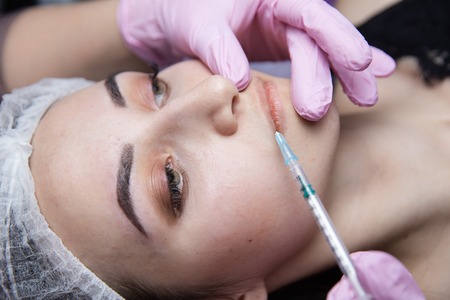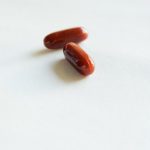1. Understanding Common Side Effects
After receiving a cosmetic treatment, it’s totally normal to experience some mild side effects. These are typically part of the body’s natural healing process and usually go away on their own within a few hours to a few days. Knowing what’s expected can help you feel more at ease and avoid unnecessary worry.
Why Side Effects Happen
Cosmetic procedures, whether they’re injectables like Botox or dermal fillers, or skin treatments like chemical peels and laser therapy, often involve stimulating or slightly injuring the skin to promote rejuvenation. As your body responds to this, you might notice a few temporary changes in the treated area.
Typical Side Effects You Might Experience
| Side Effect | Description | How Long It Usually Lasts |
|---|---|---|
| Redness | Mild to moderate redness around the treated area, similar to a light sunburn. | A few hours to 2 days |
| Swelling | Puffiness or localized swelling where the procedure was done. | A few hours to 3 days (sometimes up to a week for fillers) |
| Mild Discomfort or Tenderness | Soreness when touching or moving the treated area. | A day or two |
| Bruising | Purple or blue marks from minor bleeding under the skin, especially common with injections. | A few days to one week |
| Dried Skin or Peeling | The skin may flake or peel, especially after chemical peels or resurfacing treatments. | A few days depending on treatment depth |
A Quick Note About Individual Reactions
Your body is unique, so your experience may vary slightly from someone else’s. If you’ve had treatments before and noticed certain side effects, they may happen again in a similar way. That said, its helpful to understand which side effects are normal—and which could be a sign that it’s time to reach out to your provider. We’ll dive into that next.
This section gives you a good idea of what to expect right after your treatment. In the next part, we’ll explore how to tell if a side effect is something you can manage at home—or if it calls for medical attention.
2. At-Home Management: Tips for Relief
Experiencing mild side effects after a cosmetic procedure is common and often manageable from the comfort of your home. Understanding how to safely care for these symptoms can help you feel more comfortable and support your recovery.
Common Mild Side Effects You Can Treat at Home
After treatments like Botox, fillers, laser therapy, or chemical peels, you might notice minor swelling, redness, tenderness, or bruising. These reactions are typically short-lived and not a cause for concern.
Simple Ways to Soothe Discomfort
Here are a few safe and effective methods you can use at home to ease mild symptoms:
| Symptom | At-Home Remedy | How It Helps |
|---|---|---|
| Swelling | Cold compress (15 minutes on, 15 minutes off) | Reduces inflammation and numbs the area |
| Redness or irritation | Aloe vera gel or fragrance-free moisturizer | Soothes skin and promotes healing |
| Mild pain or soreness | Over-the-counter pain relievers like acetaminophen (Tylenol) | Provides temporary relief without increasing bruising risk |
| Bruising | Arnica cream or gel applied topically | Supports faster fading of bruises |
What to Avoid During Recovery
- No touching or massaging treated areas: Let the product settle naturally unless directed otherwise by your provider.
- Avoid strenuous exercise for 24-48 hours: This helps minimize swelling and bruising.
- No alcohol or blood thinners: These can worsen bruising if taken soon after treatment.
Quick Tip:
If youre unsure whether your symptom is normal, take a photo and contact your provider. Most clinics are happy to offer reassurance or guidance without requiring an in-person visit.
Always follow the specific aftercare instructions given by your practitioner, as recommendations may vary depending on the type of treatment you received and your individual skin type.
![]()
3. Warning Signs: When to Seek Medical Attention
While mild side effects like slight redness, tenderness, or minimal swelling after a cosmetic procedure are usually normal and can be managed at home, its important to recognize the signs that may indicate something more serious is going on. Knowing when to call your provider or seek immediate medical care can help prevent complications and ensure proper healing.
How to Know If Its More Than Just a Normal Reaction
Not all discomfort means there’s a problem—but certain symptoms should never be ignored. Below is a helpful guide to differentiate between common side effects and warning signs that require professional attention.
Common vs. Concerning Symptoms
| Normal Side Effects (Usually Okay at Home) | Warning Signs (Call a Doctor) |
|---|---|
| Mild redness or warmth at the injection site | Redness spreading beyond treated area or lasting more than 3 days |
| Slight swelling or puffiness | Excessive swelling that worsens over time |
| Tenderness or mild discomfort | Severe pain not relieved by over-the-counter medication |
| Minor bruising | Hard lumps, skin discoloration, or numbness |
| No fever or systemic symptoms | Fever, chills, nausea, or general feeling of illness |
Signs of Infection or Allergic Reaction
If you notice any of the following symptoms, it may signal an infection or allergic response and requires prompt medical evaluation:
- Yellow or green discharge from the treated area
- Pain that intensifies instead of improving
- Hives, itching, or difficulty breathing (possible allergic reaction)
- The treated area feels hot to the touch and looks increasingly red
When in Doubt, Reach Out
If youre ever unsure whether a symptom is normal or concerning, dont hesitate to contact your healthcare provider. Its always better to ask questions early than to wait until things get worse. Many practices offer post-treatment support via phone or messaging apps—use them! Your safety and peace of mind come first.
Pro Tip:
Take photos of your treated area daily for the first few days post-procedure. This makes it easier to track changes and share with your provider if needed.
4. How to Communicate Concerns with Your Provider
When you’re experiencing side effects after a cosmetic treatment, knowing how and when to contact your healthcare provider is key to staying safe and getting the right care. Whether it’s a mild reaction or something more serious, clear communication can make all the difference.
Best Ways to Reach Out
Different providers may offer different ways to get in touch. Here are common methods and tips for using them:
| Contact Method | When to Use | Tips |
|---|---|---|
| Phone Call | For urgent concerns or fast answers | Call during office hours; use emergency line if available after hours |
| Email or Patient Portal | For non-urgent questions or updates | Include clear details and photos if needed; allow 24–48 hours for response |
| In-Person Visit | If symptoms worsen or don’t improve | Schedule an appointment as soon as possible; bring notes or photos of symptoms |
| Telehealth Video Call | If youre unable to visit in person but need face-to-face advice | Make sure you have a good internet connection and proper lighting to show affected areas |
What Information Should You Share?
The more specific you are, the easier it is for your provider to understand what’s happening. Here’s what you should include when reporting side effects:
- Description of symptoms: What are you feeling or seeing? (e.g., redness, swelling, pain)
- Treatment date: When did you receive the procedure?
- Treatment type: Was it Botox, filler, laser, etc.?
- Timeline: When did the side effect start? Has it changed over time?
- Your actions: Have you taken anything like Tylenol or applied ice?
- Photos: If visible, take clear pictures in good lighting for reference.
When to Seek Immediate Care
If your symptoms are severe or unusual, don’t wait—some reactions need urgent medical attention. Watch for these warning signs:
- Trouble breathing or swallowing
- Shooting pain or numbness spreading from the treatment site
- Purple or white patches on skin (may signal poor blood flow)
- Sudden vision changes (especially after fillers near the eyes)
- A fever over 100.4°F (38°C) with chills or pus-like discharge
If any of these occur, call your provider immediately or go to the nearest ER.
Your provider is there to help—never hesitate to reach out if something doesn’t feel right. Being proactive can prevent small issues from becoming big problems.
5. Preventive Measures for a Smoother Recovery
Taking the right steps before and after your aesthetic treatment can make a big difference in how your body responds. While some side effects are normal, others may be minimized or avoided altogether with a little planning and care. Here’s how you can take charge of your recovery process.
Pre-Treatment Precautions
Preparing your body ahead of time is key to reducing potential side effects. Talk to your provider about any medications or supplements youre taking, as some may increase bruising or swelling. Here are some general tips:
| Precaution | Why It Helps |
|---|---|
| Avoid alcohol 24-48 hours before treatment | Reduces risk of bruising and dehydration |
| Stop blood-thinning supplements (e.g., fish oil, vitamin E) | Lowers chance of bleeding and bruising |
| Avoid NSAIDs like ibuprofen before treatment | Minimizes inflammation and bruising |
| Stay hydrated | Supports skin health and healing |
Post-Treatment Care
The way you care for your skin and body after a procedure plays a big role in recovery. Follow these simple guidelines to help side effects resolve faster:
- Ice application: Use cold packs (wrapped in a clean cloth) for 10-15 minutes at a time to reduce swelling.
- Avoid touching the treated area: Let your skin heal without interference.
- No intense workouts for 24-48 hours: Exercise increases blood flow, which can worsen swelling and bruising.
- Sleep with your head elevated: This helps minimize swelling, especially after facial treatments.
Lifestyle Adjustments That Support Healing
Your everyday habits can impact how well and how quickly you recover. Consider making these adjustments around the time of your treatment:
| Lifestyle Habit | Recommended Adjustment |
|---|---|
| Diet | Avoid salty foods; eat fresh fruits & veggies rich in antioxidants |
| Caffeine intake | Limit coffee and energy drinks that may dehydrate you |
| Tobacco use | Avoid smoking as it slows healing and affects circulation |
| Sunscreen use | Diligently apply SPF daily to protect healing skin from UV damage |
Your Role Matters
You play an important role in minimizing side effects and supporting your body through recovery. By following these preventive measures, you set yourself up for the best possible results—and peace of mind.

